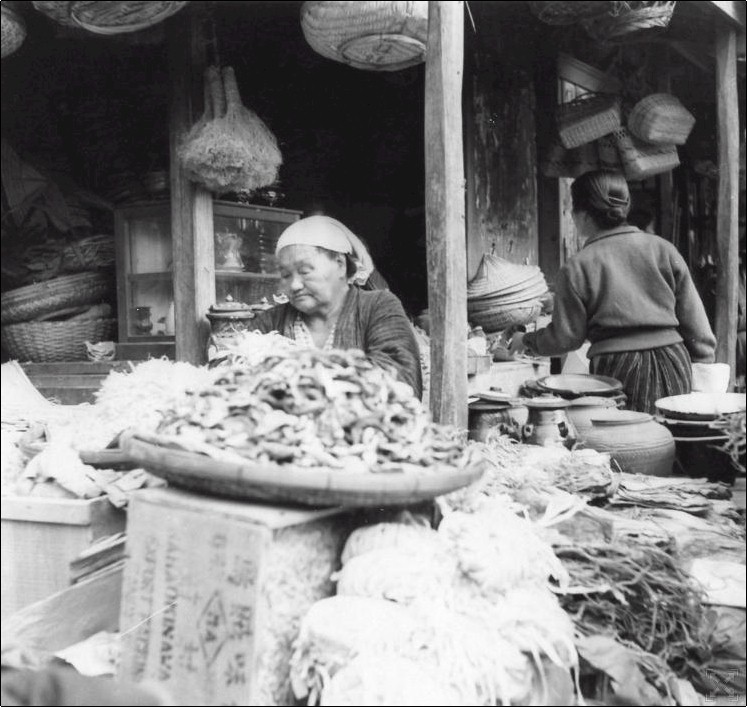
|
Small dried, silvery fish are a popular item, often eaten as snacks. Large pottery items are seen at this particular stall. Traditional Okinawan pottery is generally classified into two categories. One is Yakishime-style unglazed Arayaki (Nanban ware), and glazed Joyaki ware. The unglazed ware consists of crocks and jars. This style developed from the flourishing trade that the Ryukyu Kingdom had with Southeast Asia in the 15th and 16th centuries and was learned after contact with the Southeast Asian style of making liquor jars. This pottery is thought to have been first produced in the Kina area of Yomitan Village. It is well suited to production of storage containers for unhulled rice, soybeans, foodstuffs such as miso (soybean paste), and is essential for aging awamori , an Okinawan distilled spirit. Arayaki was the chief production item of potteries until before WWII but demand dropped off after the war due to changes in the lifestyle of Okinawans. The glazed ware consists of everyday utility items. During the ancient Ryukyu Kingdom this pottery was fired to meet demand within the kingdom. For this reason, it is often said to be simple and unsophisticated pottery. Straw hats, as seen in the back of this stall, are worn whenever the Okinawan works out in the sun. They go to extremes to prevent prolonged exposure to sunlight. It's not unusual to observe workers in the heat of the summer working with their necks covered with fabric and large-brimmed headwear. Pandanus leaves are used throughout the Pacific for making baskets, mats, and even thatched roofs. There are a number of baskets available for sale in this stall. |
Webmaster: Mick McClary P.O. Box 6245, Great Falls, Montana 59406